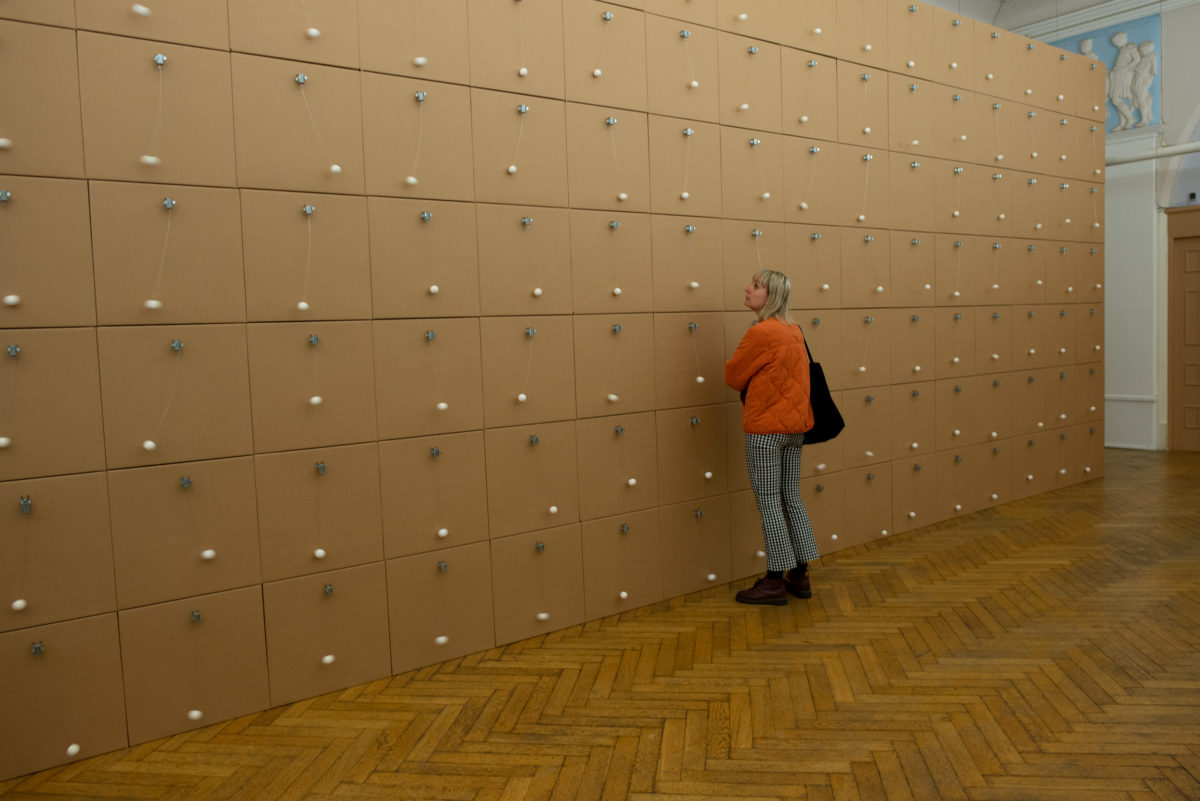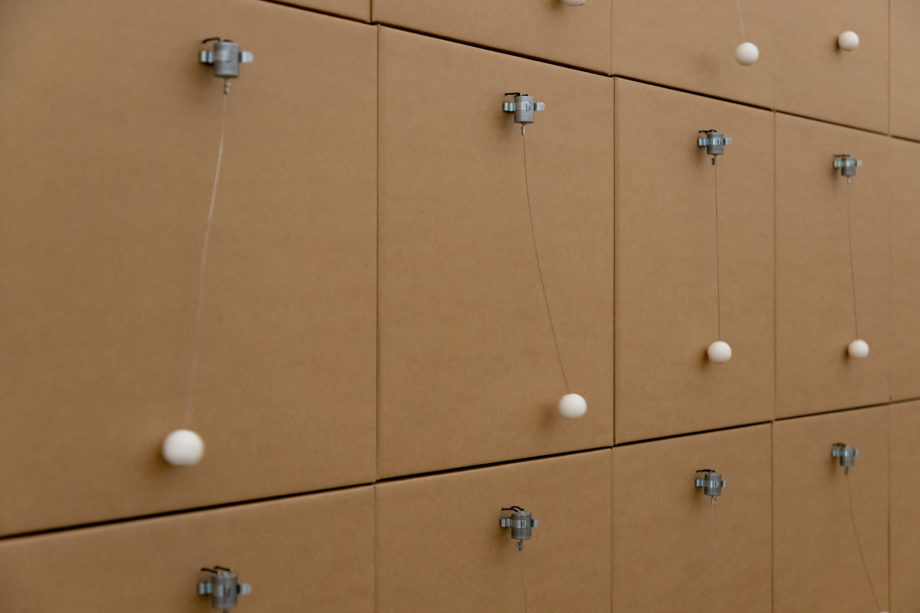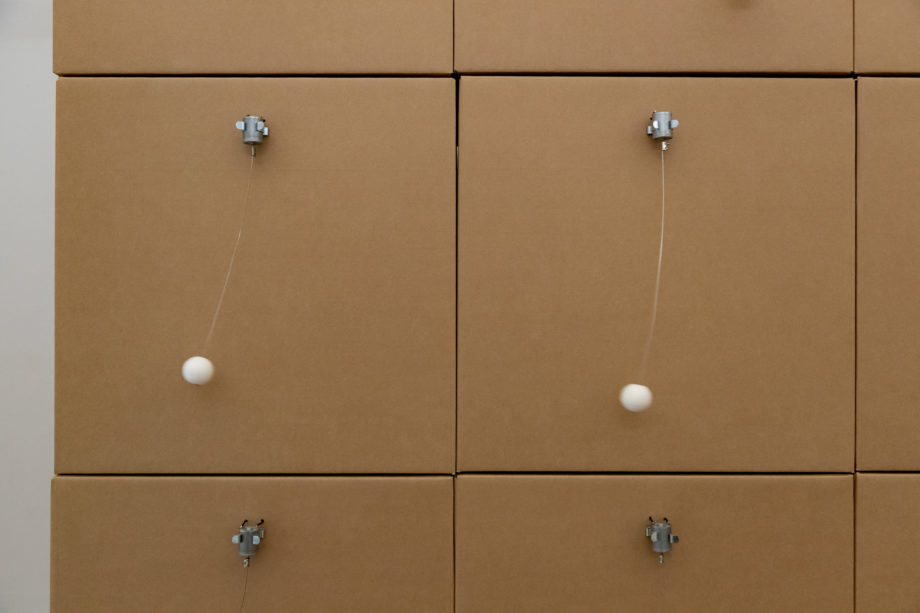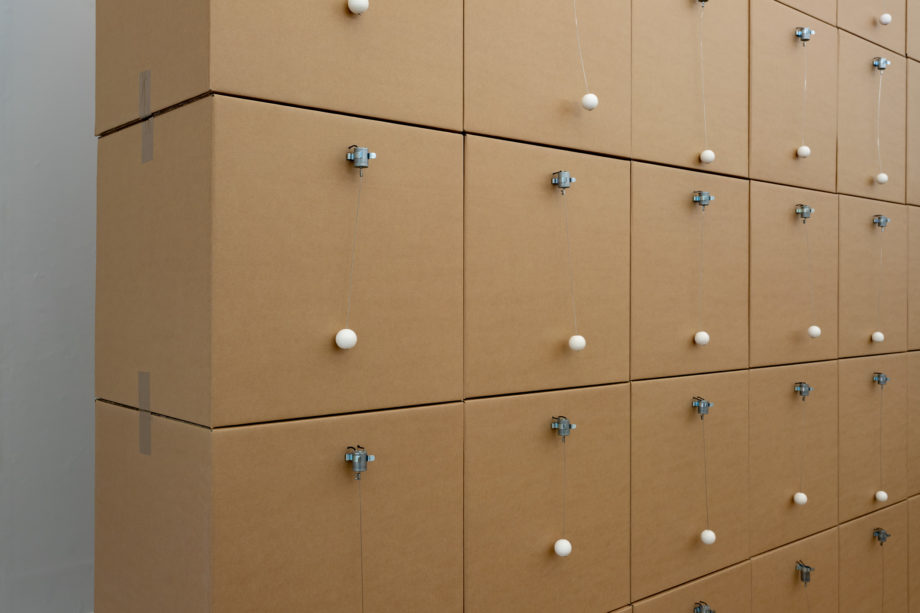Zimoun, 2022
Drawing on his work with industrial materials and mechanical processes, Zimoun presented ‘133 prepared dc-motors, cotton balls, cardboard boxes 50 x 50 x 50cm’ at Blackburn Museum and Art Gallery for the summer of 2022. In his first solo installation in the UK since 2014, the artist animated innocuous materials to become rhythmic and chaotic cascades of sound. The ambitious structure came alive with a constant, percussive thrum of simultaneous, mechanised impact to bring complexity to otherwise simple and usually static materials.
